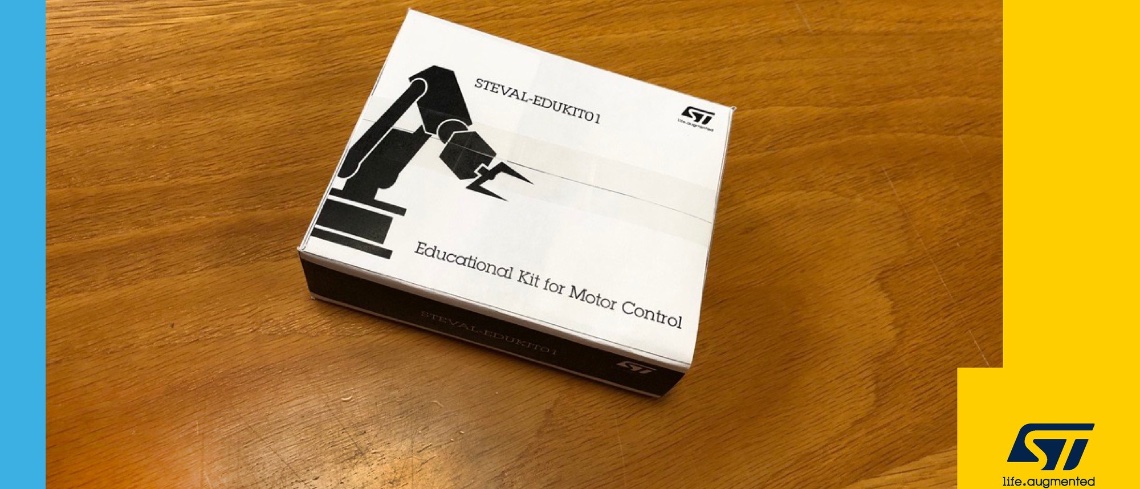To improve the accessibility of our content, please find the audio version of this blog post.
The Edukit tutorials for the motor control curriculum by Professor William Kaiser (UCLA) are now available online. The curriculum uses the Edukit System (STEVAL-EDUKIT01), a package containing development boards, a free-swinging pendulum, a stepper motor actuator, and other components, to teach about stable and unstable control systems. The course provides links to download the firmware that students will use throughout the class. It also offers additional resources to assist users unfamiliar with a serial terminal utility, among other things. There are eight tutorials covering a wide range of topics, from rotor control systems to root locus designs and more. Therefore, the course will be a tremendous resource for college students, enthusiasts, or professionals looking to grasp this complex subject.
Edukit Tutorials: Making Control Systems Practical
Professor Kaiser first introduced his motor control course at the ASEE conference in 2019. Traditionally, students struggle to put what they learn into practice. Labs aren’t always helpful or even possible during a pandemic, and having a platform for experimentation is challenging. Hence, the rotary inverted pendulum at the center of the course is an important innovation because it makes the curriculum a lot more relatable. Additionally, the ability to use widely available boards, like the X-NUCLEO-IHM01A1 or the NUCLEO-F401RE, means the kit is affordable. At less than USD200, every student in a class can have their platform and apply the concepts they learn immediately.
Edukit Tutorials: Using the Kit as a Textbook
The course material includes source code, practical examples, and even videos. The curriculum starts with an introduction to control systems and performance analysis. The material does assume knowledge in college-level calculus and algebra. However, the list of additional resources and the videos showing how to perform computations in MATLAB will help even first-year students get started. Hence, the material is unique because it enables users to dive into complex notions while assisting them along the way. Moreover, while traditional college curriculum focus on stable systems, this course also covers unstable ones (See Tutorial 7 for instance). Furthermore, students learn what it means to build a robust control system or apply the Nyquist Stability Criterion. In a nutshell, the motor control curriculum offers a comprehensive and practical approach that will serve engineers in their careers.




